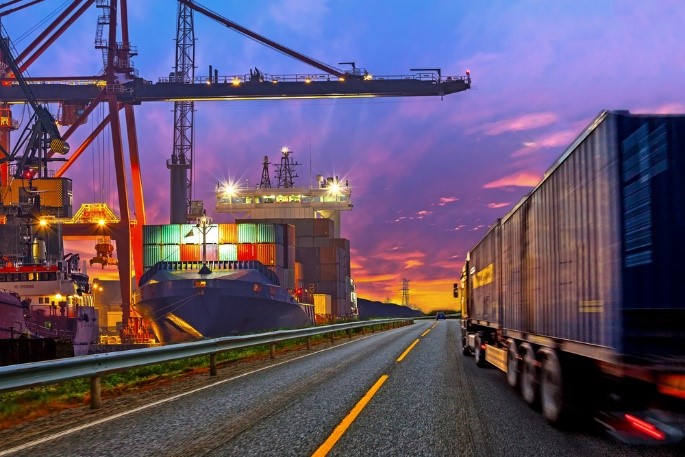Forget sandy beaches and sunshine (for a moment, at least)! Beneath the laid-back charm of Brisbane’s sun-soaked streets lies a hidden world, a symphony of steel and movement. No, this isn’t a rock concert (though the discord of cranes might fool you), but the beating heart of the city’s economy: its container transport scene. Imagine massive metal boxes, brimming with everything from exotic spices to sparkling new gadgets, embarking on epic journeys. Some rumble along highways on the backs of burly trucks, while others gracefully glide across turquoise waves aboard behemoth ships. It’s a logistical ballet, choreographed to perfection, ensuring the city’s shelves stay stocked and businesses keep humming. But how exactly do these journeys unfold? Is this industry merely chugging along or riding the wave of success? And are there more ways to get these containers from A to B than just the trusty truck? Buckle up, logistics adventurers, because we’re about to embark on a voyage of discovery, delving into the fascinating world of container transport in Brisbane. We’ll crack open the code of their journeys, explore the industry’s pulse, and uncover the secrets of smooth sailing (or rolling, rather) in this dynamic landscape. So, put on your metaphorical explorer’s hat and get ready to be amazed by the hidden engine that powers this vibrant city!
HOW DO YOU TRANSPORT SHIPPING CONTAINERS?
The sight of a truck carrying a container is commonplace in Brisbane, but the details behind the scenes might surprise you. Transport methods vary depending on the container’s destination and desired speed. Forget the stereotypical image of a rusty truck lumbering down the highway – container transport in Brisbane is a surprisingly diverse and dynamic beast! While you might be used to seeing those familiar metal boxes perched precariously on flatbeds, there’s a whole hidden network buzzing beneath the surface.
Road: For local and regional deliveries, side-loader trucks gently lift and transport containers to their final destinations. For longer distances, flatbed trucks carry them securely. Need to send your goods further afield? Flatbed trucks take over, securing your precious cargo like loyal knights before embarking on long-distance journeys.
Rail: Brisbane’s transport scene embraces the power of rails too. Picture miles of steel serpents slithering across the landscape, each carrying dozens of containers in a single, eco-friendly swoop. Perfect for interstate hauls, these trains offer efficiency and a welcome nod to sustainability.
Coastal Shipping: When time is of the essence, short-sea shipping can whisk containers between coastal ports within Australia. It’s the perfect option when deadlines loom large and punctuality is key.
IS CONTAINER TRANSPORT A THRIVING INDUSTRY IN BRISBANE?
With Brisbane’s booming population and trade, container transport in Brisbane is undeniably thriving. The Port of Brisbane, Australia’s third-busiest container port, saw a record 2.7 million TEUs (twenty-foot equivalent units) pass through in 2023, highlighting the industry’s growth. This expansion creates employment opportunities across various sectors, from logistics and transportation to warehousing and customs brokerage.
However, the industry also faces challenges. Increased competition from neighboring ports and fluctuations in global trade can impact overall performance. Additionally, infrastructure upgrades are crucial to accommodate the rising container volumes effectively.
ARE THERE OTHER WAYS TO TRANSPORT CONTAINERS?
While trucks dominate the local scene, other modes offer distinct advantages:
Multimodal Transport: Combining road, rail, and even coastal shipping can unlock cost and efficiency benefits, optimizing transport based on distance and urgency.
Intermodal Transport: Shifting goods from container to trailer or vice versa at strategic points can enhance flexibility and cater to specific needs.
Autonomous Trucks: Though still in the development stage, these self-driving vehicles could potentially improve efficiency and address manpower shortages in the future.
WHAT ARE THE BEST PRACTICES IN CONTAINER TRANSPORT?
Regardless of the chosen method, adhering to best practices ensures efficient and secure container movement:
Proper Packing and Securing: Ensuring cargo is meticulously packed and secured within the container minimizes damage and prevents shifting during transit.
Real-time Tracking: Utilizing tracking technologies provides valuable insights into the container’s location and status, facilitating informed decision-making.
Documentation and Compliance: Maintaining accurate and complete documentation, including customs clearances and permits, expedites the transport process and avoids unnecessary delays.
Collaboration and Communication: Maintaining open communication with all stakeholders involved (carriers, shippers, customs officials) fosters coordination and timely problem-solving.
CONCLUSION
The world of container transport in Brisbane is a dynamic landscape. By understanding the diverse transport methods, recognizing the industry’s growth potential, and exploring alternative options, businesses can navigate this critical sector effectively. Additionally, adhering to best practices ensures smooth sailing for your precious cargo, contributing to the overall efficiency and resilience of Brisbane’s thriving container transport industry. So, the next time you see a container truck maneuvering through the city streets, remember the intricate network it represents, connecting Brisbane to the world and shaping its economic landscape.

